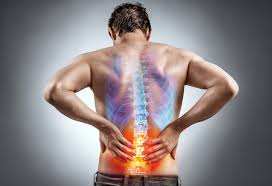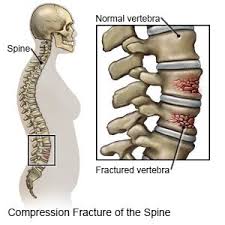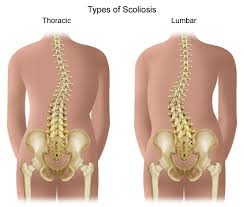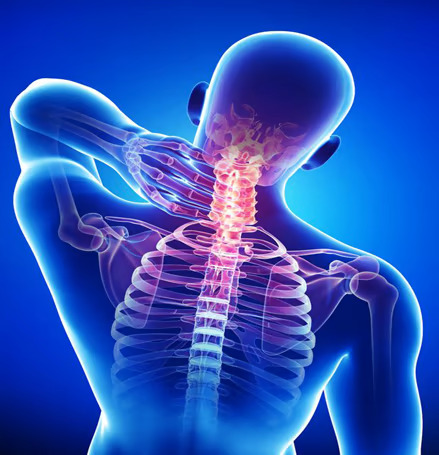
Everything about Spinal Tuberculosis (TB)
Tuberculosis is a common health problem in India. Tuberculosis is mainly divided into two types: Pulmonary and Extrapulmonary Tuberculosis.

An overview of different conditions that cause back pain
Coping with back pain is challenging. However, there are many different ways to treat and alleviate it. Having knowledge of different conditions that cause back pain helps in diagnosing and treating them effectively. Let�s explore the diverse origins of back pain and their causes surrounding muscular strains, spinal issues, and some other factors that contribute to this widespread problem.

What Is a Spinal Compression Fracture?
Taking precautions to preserve your spine�s health is vital particularly if factors like osteoporosis or a history of spinal compression fractures put you at greater risk for developing related ailments.

What is thoracolumbar scoliosis?
The spine has some natural curves, and they are located in the cervical region (neck), thoracic region (upper and mid-back), and lumbar region (lower-back) regions. During your movements, these curves work as your body�s natural shock absorbers.

Lower back pain: Everything you need to know
Lower back is a well architectured scheme of five lumbar vertebrae, joints, ligaments, muscles, nerves, and blood vessels.

Neck pain: Reasons and Methods to cure it
Neck pain or cervical pain is quite common nowadays. It is the consequences of unhealthy lifestyle, wrong posture, long working hours on laptop or cell phone, jerk due to accident, sport injury etc.

Orthopaedic Management of Upper Cervical Spine and Craniovertebral Anomalies
The upper cervical spine and craniovertebral junction (CVJ) are highly complex regions involving critical neural and vascular structures. Orthopaedic management of anomalies here—such as atlantoaxial instability or basilar invagination—requires precise diagnosis using imaging like CT and MRI, followed by carefully tailored treatments. These may include immobilization, traction, or surgical stabilization using fusion techniques. Early intervention can prevent severe neurological deficits and improve long-term mobility and quality of life.

Lumbar Spinal Fusion Surgery vs. Artificial Disc Replacement
Both lumbar spinal fusion and artificial disc replacement (ADR) address chronic lower back pain due to disc degeneration, but differ in approach and outcomes. Spinal fusion eliminates movement at the painful segment by joining two vertebrae, while ADR preserves motion by replacing the damaged disc with a synthetic one. Fusion is ideal for instability and deformity, while ADR suits younger, active individuals with isolated disc pathology. Recovery, mobility, and future spine health may vary significantly based on the chosen method.

A Guide to Know About Cervical Kyphosis
Cervical kyphosis refers to an abnormal forward curvature of the neck spine, potentially leading to neck pain, stiffness, and even neurological symptoms. It can arise from poor posture, trauma, infections, or congenital factors. This guide helps patients understand the causes, symptoms, and treatment options, which range from physical therapy and bracing to surgical correction in severe cases. Early detection is key to preventing long-term spinal cord complications and postural deformity.

Spinal Traction: Does It Work for Back and Neck Pain?
Spinal traction is a therapeutic method aimed at relieving spinal pressure by stretching the spine, often used in cases of herniated discs, sciatica, or pinched nerves. While some patients report temporary relief from back or neck pain, clinical evidence supporting long-term benefits remains limited. It is most effective when combined with other treatments like physiotherapy or medication, rather than as a standalone solution.

What Can Cause Tingling in the Midback?
Tingling in the midback can stem from various sources including nerve compression, herniated thoracic discs, spinal stenosis, or even systemic conditions like diabetes. Muscle strain or poor posture may also irritate nerves in the thoracic spine. If accompanied by other symptoms like weakness or radiating pain, further evaluation through imaging or neurological tests is essential to identify and treat the underlying cause.

Can Spinal Problems Cause Tremors?
Although less common, spinal conditions can lead to tremors, especially when spinal cord compression or nerve root irritation affects the motor pathways. Cervical spine issues or syringomyelia may disrupt neural signals, triggering involuntary movements. Diagnosing the connection requires thorough neurological evaluation and imaging studies. Timely intervention can alleviate symptoms and prevent further progression of spinal-related tremors.